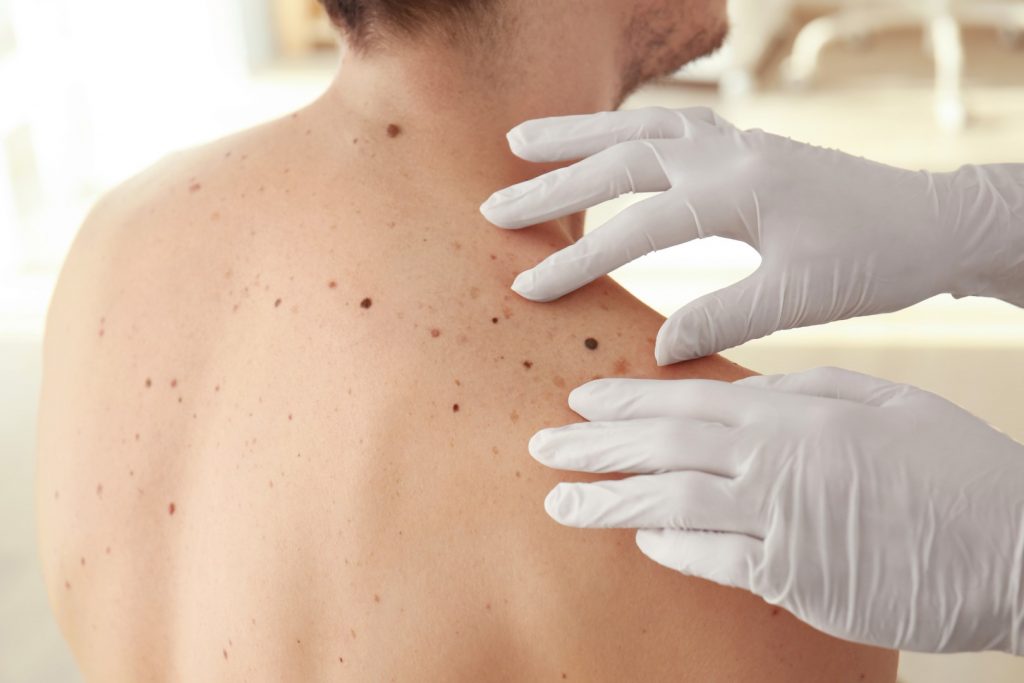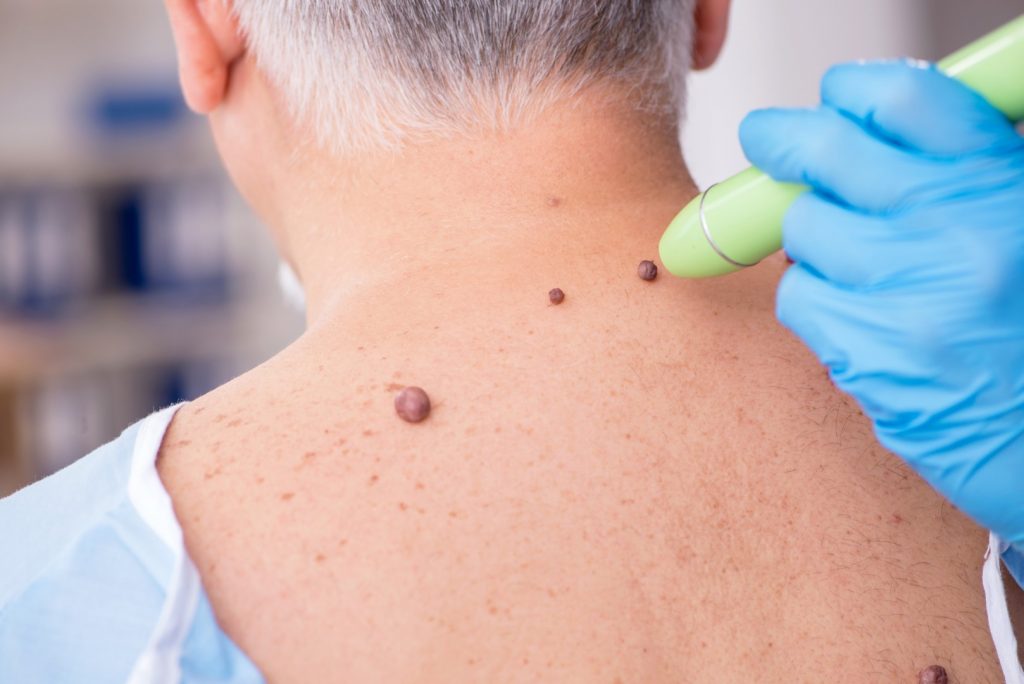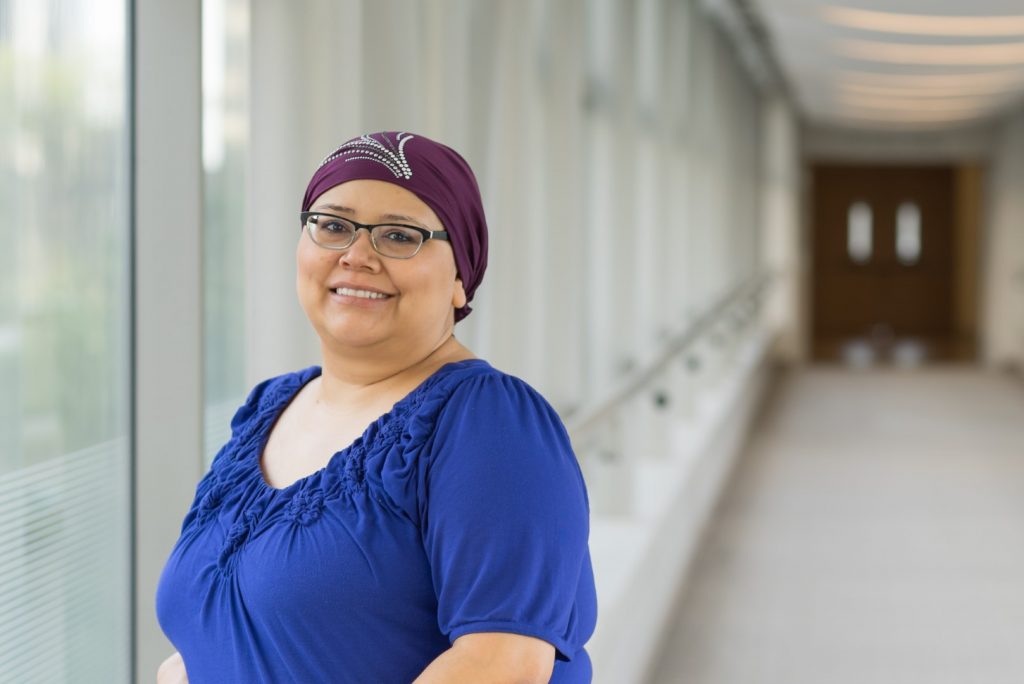Melanoma is a cancer of the skin that develops from melanocytes. Melanocytes are mostly present in the epidermis, the outermost layer of the skin. These dedicated brown pigment-producing cells – melanin, which can be of two forms (eumelanin or pheomelanin). Skin color depends on the type of melanin an individual has. Melanin safeguards the innermost layers of the skin from ultraviolet impairment, which occurs after sun exposure.

What is Melanoma?
There are several types of skin cancer; melanoma (or malignant melanoma) is among the most infrequent, affecting 132,000 individuals across the globe. It is also one of the most dangerous forms of skin cancer, capable of metastasizing (spreading) and ensuing additional damage – if not treated at an early stage.
Normally, melanoma affects the skin, particularly parts of the body disproportionately exposed to the sun. In some rare cases, the primary lesion appears on mucous membranes (mouth and genital areas) and the eyes. Dermatologists classify melanoma based on histological attributes. Each type of melanoma has a distinctive set of features: growth rate, ability to infiltrate into the innermost layers of the skin and subcutaneous structures, and lymph node and distant organs metastases. The tumor type, the diagnosis stage and the presence of metastases, significantly affect the patient’s treatment and outcomes.
What Does Malignant Melanoma Look Like?
In most cases, skin cancer is diagnosed visually by detecting suspected skin modifications.
Malignant melanoma specialists employ the “ABCDE” rule, to describe and recognize modifications indicative of a malignant process.
Asymmetry: one half of the mole or birthmark does not match the other.
Border: irregular, jagged, blurred borders.
Color: Uneven color, the mole consists of multiple shades of brown, black, and sometimes pink and white pigment.
Diameter: exceeds 6 mm. (although melanomas may sometimes be smaller).
Evolvement: changes in size, color or shape over the course of time.
Other signs to look for:
A sore that does not go away.
Spreading of pigment to surrounding skin.
Redness, swelling, or any other inflammation sign.
Changes in sensation: itchiness, tenderness, pain.
Changes in skin surface: scaling, discharge, or bleeding.
If you have any of these signs – you should be examined by a dermatology specialist.
Melanoma Diagnosis in Israel
IES specialists implement state-of-the-art and innovative diagnostic techniques for melanoma in Israel.
Whether you arrive with a definitive diagnosis, or you require an initial evaluation, we will ascertain that you get the optimum medical evaluation essential for determining your treatment strategy.
To achieve this end, we will reassess the data you bring with you, and refer you for any additional required procedures.
These are a few examples of the plethora of diagnostic tools we employ:
Visual diagnostics – a dermatologist examines suspected lesions using a dermatoscope, an optical magnification device that can assist in identifying abnormalities.
Confocal microscopy – this non-invasive technique for the detection of melanoma is based on infrared radiation`s ability to infiltrate all layers of the skin, enabling specialists to establish the depth of the lesion and the stage of tumor development.
Incisional biopsy – taking a sample tissue material directly from the lesion for subsequent histological analysis. Each sample is tested using the most innovative techniques, enabling our professionals to comprehend the complete genetic and molecular profile of the lesion.
Imaging – MRI, PET-CT for distinguishing proliferation of malignant cells within the lymph node or internal organs. Blood tests – to monitor and observe the function of primary organs in your body.

Melanoma Treatment in Israel
The first step in deciding on a treatment plan is the assessment of disease stage.
The stage represents melanoma thickness, whether it has metastasized to nearby lymph nodes or any other organs, and other specific factors.
IES provides state-of-the-art treatment approaches for melanoma in Israel.
These are some of the treatment options we offer:
1. Surgical Removal of Melanoma
This is often the first stage in treatment, since radical surgery is required to completely remove the affected area of the skin. IES`s dermatologists specialize in applying the Mohs technique for melanoma surgery.
During Mohs surgery, after each removal of tissue, a microscopic investigation of surgical margins is conducted. If the margins are free of cancer cells – the procedure is deemed complete. If, however, cancer cells are detected, the surgeon will remove additional tissue and send it for microscopic investigation, etc.
This way, we ensure the optimum outcome for you: the tumor is fully removed and the skin incurs only minimal damage.
If the imaging tests have demonstrated that there is lymph node metastasis and/or the cancer cells have spread to internal organs – IES`s oncology surgeons will eradicate the cancerous sites.
The cost of melanoma removal depends on the degree of the surgery, and the metastasis of the disease.
By choosing IES, you will have the option to choose your attending physician and surgeon from a list of Israel`s top specialists.
2. Immunotherapy
This melanoma treatment technique involves the use of medications to stimulate the immune system of an individual patient in order to identify and eradicate cancer cells more effectively.
These are several examples:
Interferon-alfa: a type of cytokine. Cytokines are proteins in the body that strengthen the immune system from an overall perspective. Synthesized types of cytokines, (i.e. interferon-alfa), are occasionally used in melanoma patients. Interferon-alfa is sometimes prescribed as adjuvant therapy after surgery with the aim of preventing cancerous cells from metastasizing and developing. This may delay the recurrence of melanoma.
Anti CTLA4 (YERVOY/Ipilimumab): this is a synthesized form of an immune system protein. This medication works in your entire body, and assists in activating disease-fighting cytotoxic T-cells. By obstructing the activity of CTLA-4, Ipilimumab reinforces the immune response against melanoma cells in the body. This medicine has a somewhat low response rate, works slowly, but provides the potential for complete recovery.
Anti PD1 (KEYTRUDA/Pembrolizumab): a second line therapy. Pembrolizumab targets PD-1, the mechanism of drug action is the equivalent of that of Ipilimumab. This medication helps stimulate the proliferation of cytotoxic T cells in the skin itself. It is more specific and has a superior response rate.
Costs of melanoma treatment using immunotherapy depend on the course of the treatment and disease stage.
3. Targeted Therapy
Over the past few years, there has been a significant expansion in the production of new and more specific drugs for melanoma.
Recent studies showed that some of the melanoma cells differ from normal cells in terms of particular proteins and other features. Subsequent to that discovery, scientists developed medications that work like a guided missile – they eradicate only cancer cells.
It`s important to note that not all patients have the type of melanoma with that particular mutation, thereby causing the tumor to be sensitive to the medication.
During the pathological analysis of the tumor tissue, IES`s specialists will conduct genetic testing, which will establish if there are any mutations in the tumor and whether you are an eligible candidate for targeted therapy.

Here at IES you may receive the latest target therapy medications, including:
BRAF inhibitors (ZELBORAF, TAFINLAR): half of all strains of melanoma have mutations in the BRAF gene. The mutations cause the melanoma cell to divide and proliferate at a rapid pace. These medications help halt this process.
MEK inhibitors (MEKINIST): The MEK gene works the same way the BRAF gene does. The purpose of this drug is to impede its activity.
Costs of targeted therapy for melanoma depends on treatment duration and disease stage.
4. Radiation
Radiation is helpful for alleviating pain and discomfort in advanced melanoma patients, and as a postoperative therapy for melanoma.
Why choose IES for Melanoma Treatments in Israel?
IES is a private medical facility, internationally known for its highly professional physicians, state-of-the-art medical equipment and optimum quality, top notch care and inpatient conditions.
Here at IES the latest methods and ultramodern machinery are used for skin cancer diagnosis and treatment.
By choosing IES, you are guaranteed to receive the best treatment – customized specially for you. IES ensures an individual approach and unmatched quality of care, helping patients from Israel and abroad to cope with malignant neoplasms of the skin.
No Red Tape:
At IES you don’t have to run from one physician to another, or deal with scheduling appointments and tests –we will appoint a Case Manager for you, who will assist you in coordinating, monitoring, and planning your medical treatment in Israel with an emphasis on providing the highest quality health care.
Israel`s Leading Physicians Work at IES.
Here at IES, all of Israel`s leading experts are at your service. Unlike Israel`s state hospitals, IES allows you to choose your own attending physician, oncologist and surgeon.
Dr. Shapira, Melanoma Expert- Meet Dr. Ronnie Shapira: Doctor of oncology at the Ella Institute for the treatment and research of melanoma and skin cancer, Sheba Medical Center. Dr. Shapira specializes in Melanoma, and is considered to be a leading expert in this field.
As part of IES policy, Dr. Shapira will assess all of your medical data, and will help you find the best possible plan of treatment – one that meets your needs, wants, and disease status.


